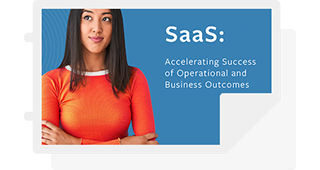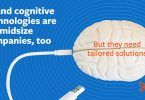The Fourth Industrial Revolution represents a fundamental shift in the way we live, work, and connect with each other. It makes sense that enterprise organizations are adopting the cloud to not only meet the needs of business in today’s digital economy, but to be able to respond to the changes they know can arise at any moment. Doing so demands a new approach: modernization.
Modernization requires a strategy that sets the right pieces of the puzzle in place, from technology to people. Many organizations are well down the path to modernization already, and their journeys can help others minimize negative impacts and realize the true benefits of cloud quickly and efficiently.
As our customers have explored how to modernize their IT environments, we’ve seen several common themes.
1. All or nothing
Some organizations choose to move everything to the cloud without a full understanding of their infrastructure and the applications and services being migrated. This “all-in” approach often moves things that should be left behind, like zombie servers chewing up resources or bloated applications using more resources than they should. One organization that successfully modernized all of their infrastructure in almost record time got their first month’s cloud provider bill and was stunned to see that it was nearly 13x higher than they anticipated. When they retraced their steps, they found applications and servers which should not have been moved. They adjusted their approach and felt the financial impact almost immediately.
In the modern digital economy, the organizations that have succeeded have taken a methodical yet streamlined approach to both technology selection and process implementation.
2. Plan for success
The old saying that “Those who fail to plan, plan to fail” has never been more true than in the context of IT modernization. Without a concrete plan, you will struggle. The first step of planning requires an audit of what is in place, with services and providers. Then, address the need for scalability and flexibility for the growth and expansion needed to serve the organization’s business needs.
3. Flexibility and scalability
The Greek philosopher Heraclitus said it best: “The only constant in technology is change.” Okay, maybe he didn’t mention technology directly, but it applies more today than ever before. Customers who neglect to consider the intricacies of flexibility and scalability have had a harder time achieving their long-term goals.
One of the key components of modernization success is making sure the environment supports not only today’s needs, but is easily adaptable to meet tomorrow’s requirements. This means that it’s crucial to really think through how to optimize processes and workflows as well as ensuring that technology solutions are agile enough to elastically expand without breaking.
4. All together now
The days when decisions were made in a vacuum, especially for ITSM and ITOM teams, are thankfully long gone. While a modernizing solution may be the best business decision, without leadership buy-in and business support, the best products can and will fail.
While it goes without saying that executive support is critical, just as acute is the support of the people who will actually be using the new technology. Is the interface intuitive and easy to use? How much training is required? Will they have to use multiple systems, and does it make their job more efficient?
Gaining the support of those impacted by the change and building on their excitement can help get a project over any rough spots and increase the time to adoption. Again, this comes back to the initial planning by defining the scope of the project, identifying who is impacted, and including them in the process early.
To wrap up, the initiative to modernize isn’t one to be taken lightly. It’s complex, with many moving pieces. It may seem like an impossible challenge, but by identifying the risks, planning mitigation paths, and preparing to adapt and change, you can maximize the success of your modernization journey.





